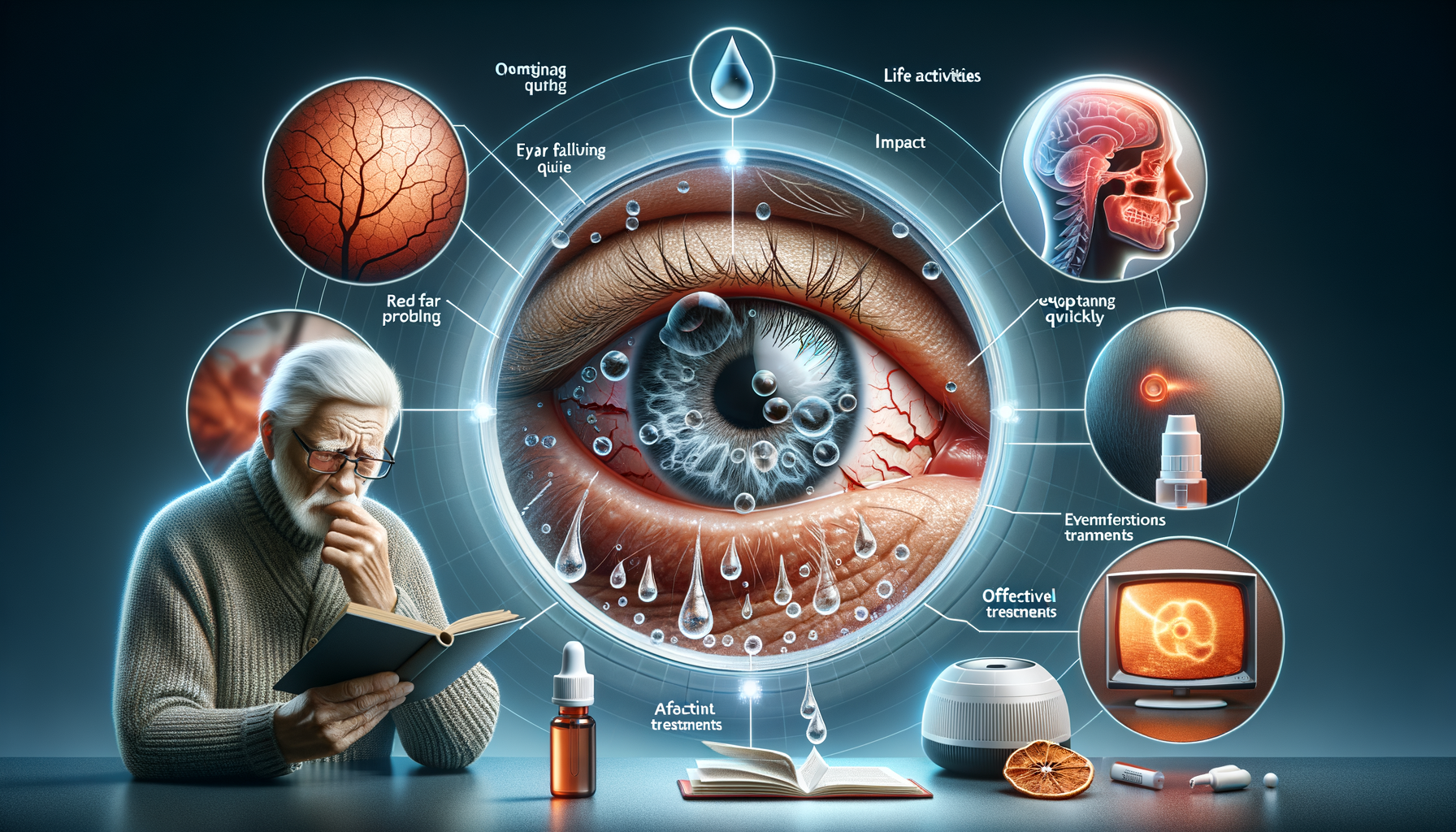What Chronic Dry Eyes in Seniors Can Mean
Could persistent eye irritation and discomfort be more than just occasional dryness? For an older individual, a daily struggle with gritty or burning sensations in the eyes might point to an underlying condition. Exploring potential causes and implications can offer clarity on these challenging symptoms.

Causes and Symptoms of Chronic Dry Eyes in Seniors
Chronic dry eyes, medically known as keratoconjunctivitis sicca, are a prevalent condition among seniors, often resulting from a combination of factors. As individuals age, the natural production of tears tends to decrease, leading to inadequate eye lubrication. This reduction in tear production is a primary cause of chronic dry eyes. Additionally, hormonal changes, particularly in postmenopausal women, can exacerbate this condition.
Environmental factors also play a significant role. Seniors often spend more time indoors, where air conditioning or heating systems can reduce humidity, further drying out the eyes. Certain medications commonly used by older adults, such as antihistamines and diuretics, can also contribute to this condition by reducing tear production.
Symptoms of chronic dry eyes can range from mild to severe and often include:
- Persistent dryness and irritation
- A gritty or sandy feeling in the eyes
- Redness and burning sensations
- Blurred vision
- Increased sensitivity to light
Recognizing these symptoms early is crucial for managing the condition effectively and preventing further complications.
Impact of Chronic Dry Eyes on Seniors’ Daily Life
The impact of chronic dry eyes on the daily life of seniors can be profound, affecting both physical comfort and emotional well-being. The persistent discomfort and irritation associated with dry eyes can lead to significant challenges in performing everyday tasks. Reading, watching television, or using digital devices can become strenuous, as the eyes tire quickly and vision may become blurred.
Furthermore, chronic dry eyes can affect social interactions. Seniors might avoid going outdoors or participating in activities due to increased sensitivity to wind or bright light, leading to a sense of isolation. This condition can also impact emotional health, as the constant struggle with eye discomfort may lead to frustration or even depression.
In severe cases, chronic dry eyes can result in complications such as corneal damage, which can further impair vision. Understanding the impact of this condition on daily life highlights the importance of seeking effective treatment and management strategies.
Effective Treatments for Chronic Dry Eyes in Seniors
Addressing chronic dry eyes in seniors requires a comprehensive approach that combines lifestyle adjustments with medical treatments. One of the most accessible solutions is the use of artificial tears or lubricating eye drops, which can provide immediate relief by mimicking natural tears and keeping the eyes moist.
For more persistent cases, doctors may recommend prescription medications that reduce inflammation or stimulate tear production. Punctal plugs, tiny devices inserted into the tear ducts, can also be used to retain moisture by preventing tears from draining away too quickly.
Lifestyle changes are equally important in managing chronic dry eyes. Seniors should consider:
- Using a humidifier to maintain adequate humidity levels indoors
- Taking regular breaks when using digital devices
- Wearing wraparound sunglasses to protect against wind and sunlight
- Staying hydrated and maintaining a balanced diet rich in omega-3 fatty acids
Consulting with an eye care professional is essential to tailor a treatment plan that addresses individual needs and improves quality of life.